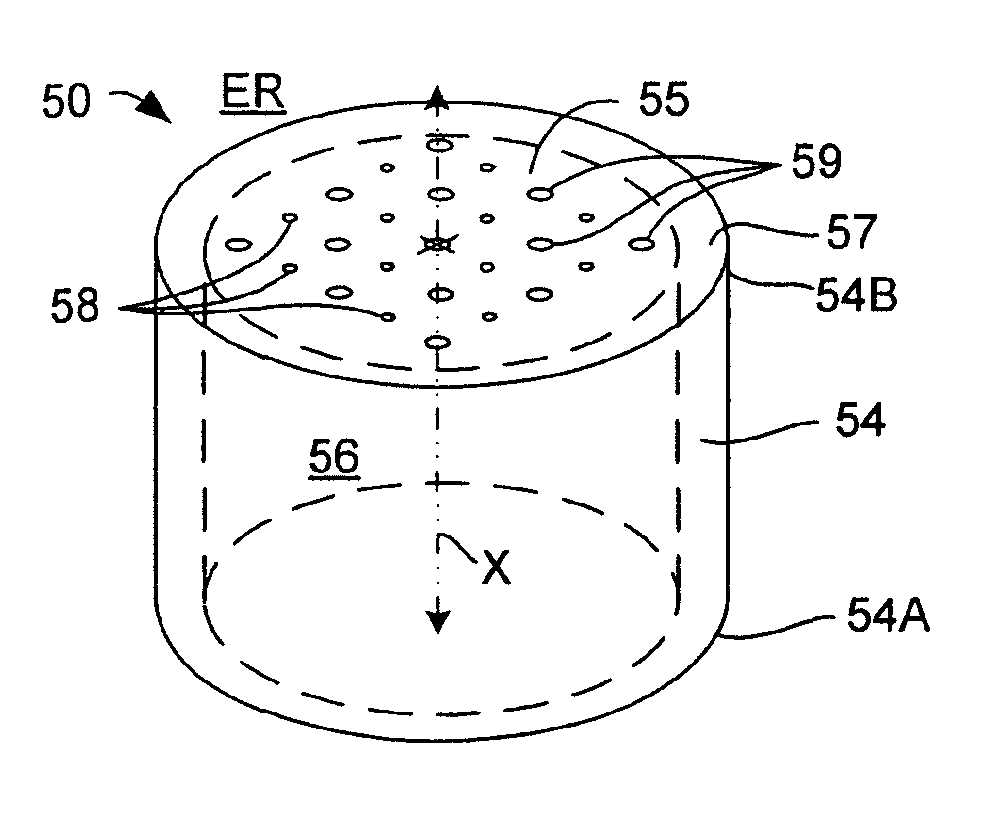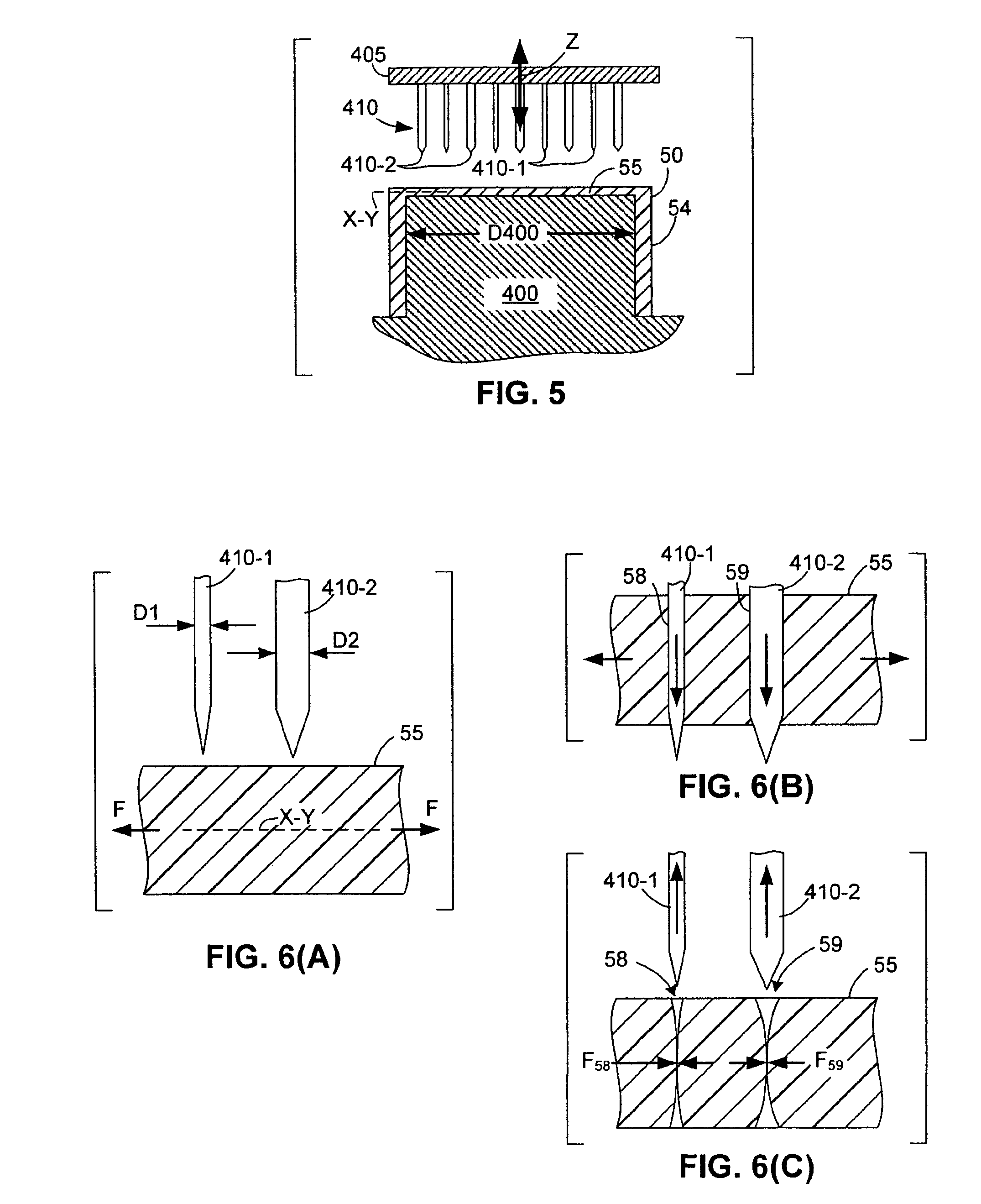Flow control element including elastic membrane with pinholes
a flow control and elastic membrane technology, applied in the direction of drinking vessels, drip catchers, transportation and packaging, etc., can solve the problems of choking and coughing, bottle-fed babies often experience feeding related problems, and fail to achieve the fluid flow rate through the membrane
- Summary
- Abstract
- Description
- Claims
- Application Information
AI Technical Summary
Benefits of technology
Problems solved by technology
Method used
Image
Examples
Embodiment Construction
[0031]FIG. 1 is a perspective view showing a generalized flow control element 50 including a wall section 54 and a membrane 55. FIGS. 2(A) and 2(B) show flow control element 50 in top plan and cross-sectional side views, respectively, where FIG. 2(B) is taken along section line 2—2 of FIG. 2(A).
[0032]Wall section 54 is a tube-like structure defining a fluid flow channel 56 that extends generally along a central axis X between a lower (first) end 54A and an upper end 54B of wall section 54. As indicated in FIG. 2(A), in one embodiment wall section 54 has a circular cross section having a diameter D.
[0033]Membrane 55 is formed form a relatively elastic material and is connected to wall section 54 such that membrane 55 is disposed across fluid flow channel 56 to impede flow between fluid flow channel 56 and an external region ER (i.e., either from fluid flow channel 56 to external region ER, or from external region ER to fluid flow channel 56). In the disclosed embodiment, membrane 55 ...
PUM
 Login to View More
Login to View More Abstract
Description
Claims
Application Information
 Login to View More
Login to View More - R&D
- Intellectual Property
- Life Sciences
- Materials
- Tech Scout
- Unparalleled Data Quality
- Higher Quality Content
- 60% Fewer Hallucinations
Browse by: Latest US Patents, China's latest patents, Technical Efficacy Thesaurus, Application Domain, Technology Topic, Popular Technical Reports.
© 2025 PatSnap. All rights reserved.Legal|Privacy policy|Modern Slavery Act Transparency Statement|Sitemap|About US| Contact US: help@patsnap.com



